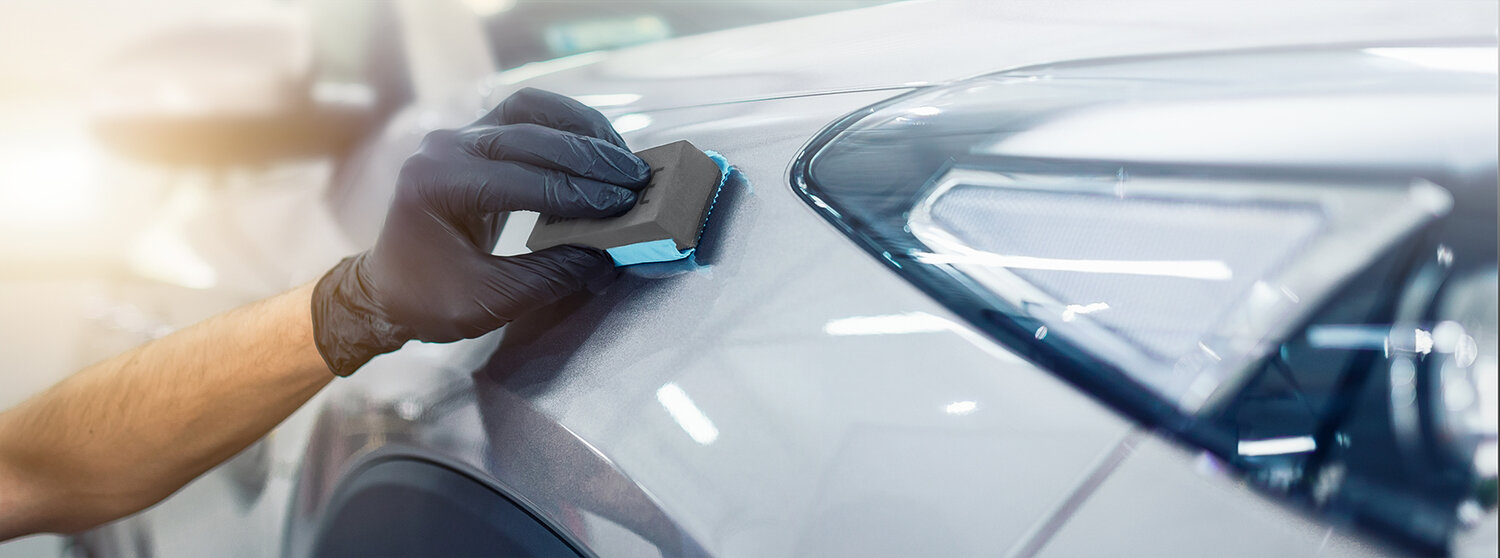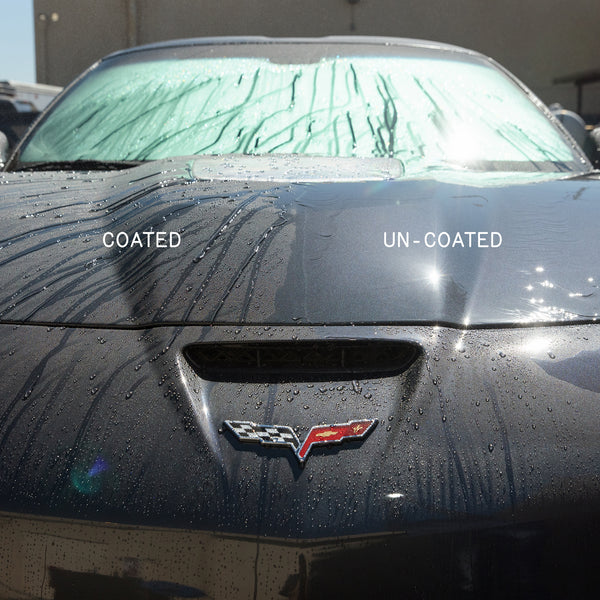Check Out How Ceramic Coating Safeguards Your Automobile's Paint Like Never Before
Check Out How Ceramic Coating Safeguards Your Automobile's Paint Like Never Before
Blog Article
Understanding the Science Behind Ceramic Coating for Improved Lorry Toughness
The science of ceramic finishing is transforming lorry maintenance by offering a powerful guard versus extreme environmental aspects. At its core, this modern technology takes advantage of the power of silicon dioxide and titanium dioxide to develop a resilient, protective layer. What specifically makes these compounds so reliable in guarding a lorry's outside? As we check out the complex make-up and application process of ceramic finishes, we discover the secrets behind their superior security and long life. Exactly how does this compare to traditional approaches, and what ramifications does it have for automobile upkeep in the long term? The solutions may amaze you.

Composition of Ceramic Coatings
Ceramic finishings are largely composed of silicon dioxide (SiO2), which is obtained from natural materials like quartz and sand. In addition to SiO2, ceramic layers usually include titanium dioxide (TiO2) for enhanced UV protection and enhanced resistance to ecological toxins.
The formulation of ceramic coverings is a meticulous procedure where the concentration of SiO2 can substantially affect the coating's performance. Greater SiO2 material generally causes greater sturdiness and firmness, adding to the finish's ability to stand up to scrapes and chemical etching. However, the balance of parts is important; excessive SiO2 can make the finishing weak, while insufficient can compromise its protective properties.
Manufacturers may likewise incorporate additional materials, such as polysilazane, to boost adaptability and ease of application. These additives improve the layer's hydrophobic residential or commercial properties, guaranteeing water and contaminants grain off the surface area effortlessly. This crafted structure underscores the efficacy of ceramic layers in securing a vehicle's outside versus a selection of adverse problems.
Application Refine Described
Applying a ceramic layer to an automobile involves numerous important steps, each necessary to making sure optimal attachment and performance of the safety layer - ceramic coating. The process starts with a complete laundry and purification of the automobile's surface area to eliminate dust, grime, and previous waxes or sealers. This step is vital as any type of contaminants left on the surface area can prevent the finishing's capacity to bond efficiently
Complying with the first cleaning, the next action entails polishing the car to eliminate any kind of imperfections, such as swirl marks or scratches. Sprucing up ensures a smooth surface, which is vital for the coating to adhere effectively and give an uniform surface. After brightening, a surface preparation spray is made use of to get rid of any type of continuing to be deposits and make sure that the surface is totally tidy.

Safety Benefits
Often hailed for its outstanding safety high qualities, a ceramic covering offers countless benefits that significantly boost lorry toughness. At its core, ceramic covering creates a hard, semi-permanent barrier over a vehicle's outside, which serves as a guard against numerous environmental hazards. This sophisticated layer of defense properly protects versus UV rays, oxidation, and fading, preserving the lorry's original paint and luster. It decreases the dangers postured by dangerous contaminants such as bird droppings, tree sap, and road crud, which, if left neglected, can result in permanent damage.
In addition, ceramic finishings exhibit hydrophobic residential properties, meaning they ward off water and facilitate a self-cleaning effect. This quality lowers the adherence of dust and mud, streamlining upkeep and cleansing processes. The covering's resistance to chemical etching additionally makes certain that the lorry's surface stays unblemished regardless of direct exposure to harsh cleaner and pollutants.
In addition to these protective advantages, the ceramic coating enhances a vehicle's aesthetic appeal by creating a shiny finish that accentuates color depth and quality. This not just maintains the automobile's visual appeal but also adds to its lasting worth by protecting the integrity of its exterior see this website in time.
Comparing to Traditional Methods
Unlike typical methods of automobile protection, such as shaving or sealants, ceramic layers use an even more long lasting and resilient remedy. Where waxes and sealers typically provide a short-lived layer of security, typically requiring reapplication every couple of months, ceramic finishes create a semi-permanent bond with the automobile's paint. This bond produces a safety layer that is immune to environmental impurities, UV damage, and minor abrasions.
Traditional waxes are largely composed of all-natural elements like carnauba wax, providing a shiny finish but doing not have the robust safety qualities of ceramic layers. Sealants, while synthetic and offering a little better resilience than waxes, still drop short in contrast to the resilience and chemical resistance of ceramic layers. The advanced modern technology of ceramic finishes incorporates nanotechnology, which enables them to complete microscopic imperfections in the paint surface area, resulting in a smoother and a lot more hydrophobic finish.
In terms of application, ceramic layers require an even more precise procedure, frequently requiring specialist installation to make sure ideal performance. This contrasts with the relatively simple application of waxes and sealants, which can be applied in your home. Nevertheless, the exceptional defense and aesthetic enhancement supplied by ceramic coatings justify the financial investment for those seeking long-lasting automobile conservation.
Longevity and Maintenance
Just how does the long life of ceramic finishes equate into convenience of upkeep for vehicle proprietors? The sophisticated formulation of ceramic coatings gives a durable protective layer on the automobile's surface, which considerably expands the life expectancy of the automobile's exterior coating.
In addition, the hydrophobic nature of ceramic coverings allows water and various other fluids to bead up and roll off the surface, bring dirt and particles with them. While the covering itself is resilient, it is not totally maintenance-free. Hence, ceramic coverings supply a valuable balance between long-lasting longevity and streamlined maintenance for vehicle treatment.
Conclusion
Ceramic finishings, with their advanced chemical make-up of silicon dioxide and titanium dioxide, supply a formidable obstacle against environmental damages, considerably enhancing automobile sturdiness. When check out here compared to typical methods, ceramic layers use superior defense against UV rays, oxidation, and chemical etching - ceramic coating.
The formula of ceramic finishes is a thorough process where the focus of SiO2 can considerably affect the finishing's efficiency.Applying a ceramic finish to a lorry involves numerous crucial actions, each essential to making sure optimal bond and efficiency of the protective layer.Usually hailed for its extraordinary safety qualities, a ceramic finishing supplies various advantages that significantly enhance automobile durability. The sophisticated formula of ceramic layers gives a robust safety layer on the lorry's surface area, which significantly prolongs the life expectancy of the site car's exterior finish.Ceramic finishings, with their innovative chemical make-up of silicon dioxide and titanium dioxide, provide a formidable obstacle against environmental damage, considerably improving car toughness.
Report this page